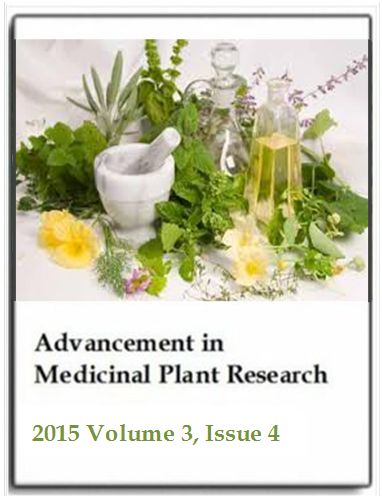Guar - A nutrimental potent ethnomedicinal cultivated forage
T. P. Mall and S. C. TripathiAdvancement in Medicinal Plant Research
Published: December 21 2015
Volume 3, Issue 4
Pages 162-165
Abstract
Bahraich U.P., India is blessed with diversified flora of more than 1200 plant species with Tharu tribals inhabiting inside as well as around the forests. The tribals have strong belief in magico therapeutic properties of plants for treatment of their ailments. The vegetation of the areas is mainly characterized by member of herbaceous plants growing on a variety of habitats along with scattered occurrence of many indigenous and exotic species of trees and shrubs in open areas or cultivated in gardens and along the road sides. The North Western Tarai belt in which Bahraich is situated is next to Himalaya which represents one of the thirty four hot spots of the World mega biodiversity. In spite of all, the wealth of traditional knowledge is being lost, as the traditional culture is gradually disappearing. Cyamopsis tetragonaloba (L.) Taub. belongs to Leguminosae, commonly known as cluster bean, guar, gvar, gwar or guwar bean, is an annual legume. This plant is cultivated for forage, to improve soil fertility, in mixed cropping as well as in crop rotation. It grows well in arid and semi arid soil, is drought tolerant and sun loving but susceptible to frost. There are a large number of health benefits of this bean. It is a good source of fiber protein and other nutrients. Lowers LDL bad cholesterols, improves heart health, and lowers risks of heart attack. The presence of fiber, folic acid and protein prevents heart complications. It improves haemoglobin, calcium and phosphorus strengthens bone. It has laxative property. It has low hypoglycemic property. It improves mental health, prevents birth defects in the foetus and vitamin K promotes foetal development. In addition it has a large industrial uses.
Keywords: Cluster bean, Guar, nutrimental, ethnomedicinal, forage.
Full Text PDF
